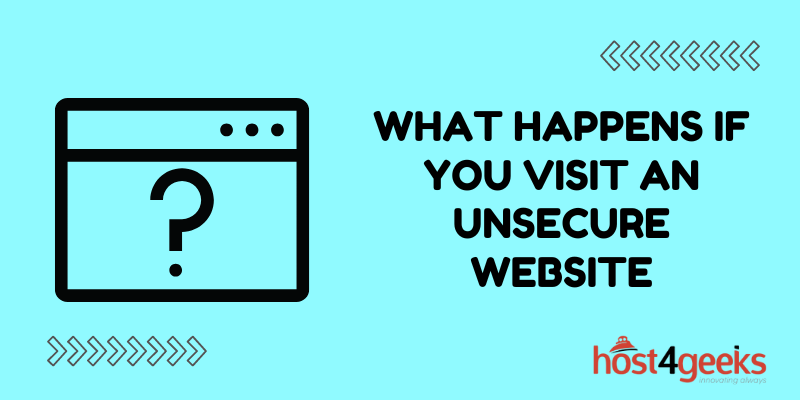In today’s digital age, where the internet plays an integral role in our daily lives, the security of online browsing has become a paramount concern.
With the rapid growth of e-commerce, online banking, and social networking, the need for a safe and secure online experience has never been more crucial.
In this article, we delve into the potential risks and consequences of visiting an unsecured website and highlight the importance of maintaining a secure browsing environment.
Unsecure Websites: A Breeding Ground for Cyber Threats
Unsecure websites, often identified by the absence of the “https” protocol and a padlock symbol in the address bar, pose a significant risk to your online security. When you visit an unsecure website, you expose yourself to a myriad of potential cyber threats, including:
Data Interception: Unsecure websites lack the encryption technology that shields your data from interception by malicious actors. This means that any information you share on such sites, such as login credentials, personal details, or financial information, can be intercepted and exploited.
Malware Infections: Unsecure websites are a breeding ground for malware, including viruses, spyware, and ransomware. Simply clicking on a link or downloading a file from an unsecured website can lead to a devastating malware infection that compromises your device and data.
Phishing Attacks: Cybercriminals often use unsecured websites to launch phishing attacks. These attacks involve fraudulent websites designed to imitate legitimate ones, tricking users into divulging sensitive information. A visit to an unsecured phishing site can lead to identity theft and financial loss.
Distrust and Reputation Damage: If your website lacks proper security measures, visitors are likely to perceive your brand as unreliable and untrustworthy. This can severely damage your online reputation and result in a loss of potential customers.
The Consequences of Visiting an Unsecure Website
The consequences of visiting an unsecured website can be dire and far-reaching. Here are some of the potential outcomes you might face:
Identity Theft: Cybercriminals can steal your personal information and use it to commit identity theft, leading to financial losses and significant stress.
Financial Loss: Unsecure websites can expose your financial details, making you vulnerable to fraudulent transactions, unauthorized purchases, and drained bank accounts.
Data Breaches: Your sensitive data, such as passwords and credit card information, can be exposed in data breaches linked to unsecured websites. This data can then be sold on the dark web, perpetuating further cybercrime.
Malware Infections: Visiting unsecured websites increases the likelihood of malware infections that can compromise your device’s functionality and security.
Compromised Privacy: Your private conversations, emails, and online activities could be monitored or accessed by malicious actors due to inadequate security measures on unsecure websites.
Safeguarding Your Online Experience: The Importance of Secure Websites
In order to safeguard your online experience and protect yourself from the potential risks of unsecured websites, it’s essential to prioritize visiting secure websites that implement robust security measures. Here’s what you can do:
Look for HTTPS: Always ensure that the websites you visit have the “https” protocol and a padlock symbol in the address bar. This indicates that the site uses encryption to secure your data.
Stay Updated: Keep your device’s operating system, browsers, and security software up to date. Regular updates often include patches for known security vulnerabilities.
Use Strong Passwords: Create complex passwords that combine letters, numbers, and special characters. Avoid using the same password across multiple websites. AdFixus also recommends using a VPN.
Enable Two-Factor Authentication: Whenever possible, enable two-factor authentication (2FA) for your online accounts. This adds an extra layer of security by requiring a second form of verification.
Be Wary of Suspicious Links: Avoid clicking on links from unknown sources, especially in emails or messages. These links could lead you to unsecure or malicious websites.
Conclusion
In a world where cyber threats are constantly evolving, it’s imperative to prioritize your online security. Visiting unsecured websites can expose you to a host of risks, from identity theft to malware infections.
By adhering to best practices such as looking for the “https” protocol, using strong passwords, and staying vigilant against phishing attacks, you can significantly reduce the likelihood of falling victim to cybercriminals.
Remember, a secure browsing experience is not just a luxury—it’s a necessity in today’s digital landscape.

